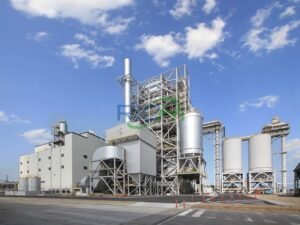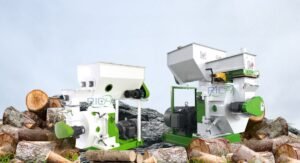
Goat feed pellet making machines have become increasingly sophisticated in recent years, with many models now offering advanced features for improved efficiency and product quality. One crucial aspect of the pellet-making process is temperature control, which plays a significant role in determining the final quality of the feed pellets. This article explores whether goat feed pellet making machines can autonomously control temperature and the implications of this capability.
The Importance of Temperature Control
Temperature control is critical in the production of goat feed pellets for several reasons:
- Nutritional Preservation: Excessive heat can degrade certain nutrients, particularly vitamins and proteins, reducing the nutritional value of the feed.
- Pellet Durability: The right temperature helps in forming stable bonds between feed particles, resulting in more durable pellets.
- Moisture Management: Proper temperature control aids in achieving the optimal moisture content in the final pellets.
- Energy Efficiency: Maintaining the correct temperature throughout the process can lead to significant energy savings.
- Product Safety: Controlling temperature helps in eliminating harmful bacteria and pathogens, ensuring the safety of the feed.
Autonomous Temperature Control in Modern Machines
Many modern goat feed pellet making machines are indeed equipped with autonomous temperature control systems. These systems typically consist of:
- Temperature Sensors: Strategically placed sensors that continuously monitor the temperature at various stages of the pellet-making process.
- Microprocessors: Advanced control units that process the data from temperature sensors and adjust the machine’s parameters accordingly.
- Automated Cooling Systems: Mechanisms that can increase or decrease heat as needed to maintain the optimal temperature range.
- User Interfaces: Displays and control panels that allow operators to set desired temperature ranges and monitor the process in real-time.
How Autonomous Temperature Control WorksThe autonomous temperature control in goat feed pellet making machines typically operates as follows:
- Pre-set Parameters: Operators input the desired temperature range based on the specific feed formulation and pellet requirements.
- Continuous Monitoring: The machine’s sensors constantly measure the temperature throughout the pelletizing process.
- Real-time Adjustments: The microprocessor analyzes the sensor data and makes immediate adjustments to maintain the set temperature range.
- Feedback Loop: The system continuously repeats this process, ensuring consistent temperature control throughout the production run.
Benefits of Autonomous Temperature Control
The ability of goat feed pellet making machines to control temperature autonomously offers several advantages:
- Consistent Product Quality: Maintaining a stable temperature results in more uniform pellets with consistent nutritional value.
- Increased Efficiency: Automated control reduces the need for manual intervention, allowing for more continuous operation.
- Reduced Waste: Precise temperature control minimizes the risk of overheating or under-processing, reducing product waste.
- Energy Savings: Optimal temperature management can lead to significant energy savings over time.
- Enhanced Safety: Automated systems reduce the risk of human error in temperature management, enhancing both product and operator safety.
Limitations and ConsiderationsWhile autonomous temperature control in goat feed pellet making machines is highly beneficial, there are some limitations and considerations to keep in mind:
- Initial Setup: Proper initial calibration and setup of the temperature control system are crucial for optimal performance.
- Maintenance Requirements: These sophisticated systems may require more specialized maintenance and occasional recalibration.
- Cost: Machines with advanced autonomous temperature control features are typically more expensive than basic models.
- Operator Training: While the system is autonomous, operators still need training to understand and effectively use the temperature control features.
- Adaptability: The system may need adjustments when switching between different feed formulations or pellet sizes.
Future Developments
The technology for autonomous temperature control in goat feed pellet making machines continues to evolve. Future developments may include:
- AI Integration: Incorporation of artificial intelligence to predict and adjust for temperature fluctuations based on various factors like ambient conditions and feed composition.
- Remote Monitoring and Control: Enhanced capabilities for remote operation and monitoring of temperature control systems.
- Improved Energy Efficiency: Development of even more energy-efficient heating and cooling mechanisms.
- Greater Precision: Advancements in sensor technology for even more precise temperature control.
Conclusion
Modern goat feed pellet making machines are indeed capable of autonomously controlling temperature, representing a significant advancement in feed production technology. This capability offers numerous benefits, including improved product quality, increased efficiency, and better energy management. While there are some limitations and considerations, the advantages of autonomous temperature control far outweigh the drawbacks for most operations.
For farmers and feed producers considering investing in a goat feed pellet making machine, the presence of an autonomous temperature control system should be a key factor in the decision-making process. As technology continues to advance, we can expect even more sophisticated and efficient temperature control systems in future models, further enhancing the quality and consistency of goat feed pellet production.
Ultimately, the ability of these machines to autonomously control temperature not only improves the feed production process but also contributes to better nutrition for goats, leading to healthier animals and potentially improved agricultural outcomes.
Related post: ring die pellet machine






